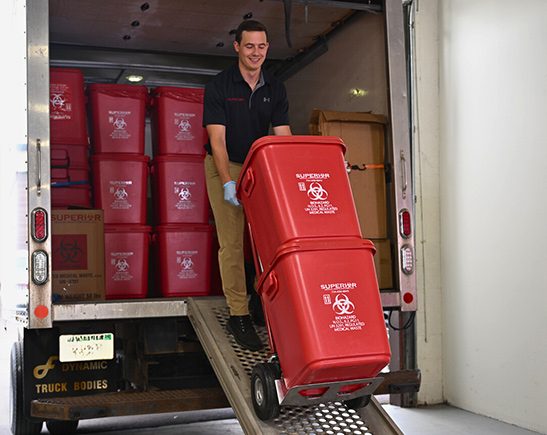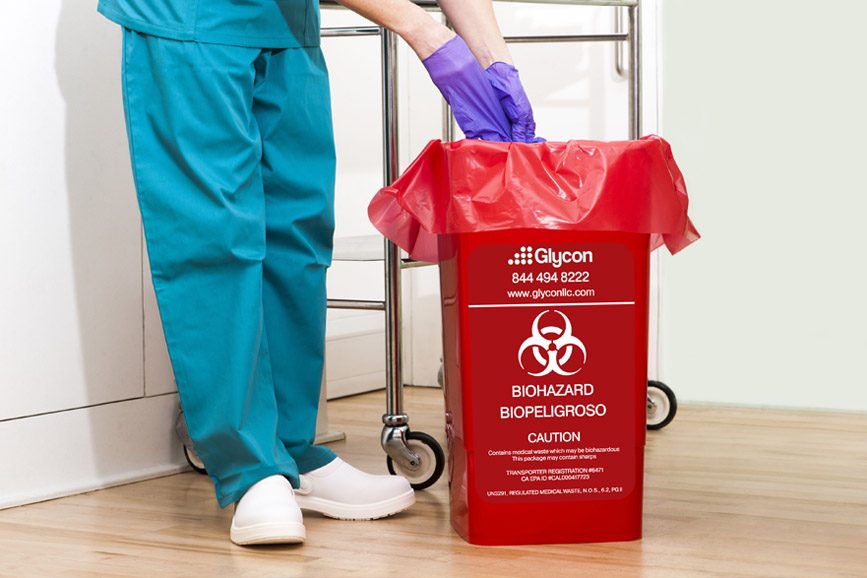Stay Ahead of Laws: Specialist Advice on Medical Waste Disposal
In a world where the healthcare sector is frequently progressing, it is essential for clinical facilities to stay in advance of policies when it comes to the proper disposal of clinical waste. From comprehending the different groups of medical waste to applying the appropriate collection and segregation methods, this conversation will give useful insights and workable suggestions to help centers stay in advance of regulations in the ever-changing landscape of clinical waste disposal.
Understanding Clinical Waste Categories
Understanding clinical waste categories is necessary for proper disposal and administration in healthcare centers. Medical waste refers to any kind of waste produced by healthcare activities that may position a risk to public wellness or the atmosphere. It is important to classify medical waste precisely to guarantee its safe handling, transport, therapy, and disposal.
There are several classifications of clinical waste that healthcare facilities require to be acquainted with. The most typical groups consist of infectious waste, pathological waste, sharps waste, pharmaceutical waste, and chemical waste. Each classification has certain standards and regulations for its appropriate administration and disposal.
Transmittable waste consists of materials contaminated with blood or other physical liquids, such as handwear covers, gowns, and lab cultures. Pathological waste refers to human cells, organs, or body parts that need special delivery and disposal. Sharps waste includes utilized needles, syringes, and various other sharp things that can create injury and transmit infections. Pharmaceutical waste comprises run out, extra, or contaminated medications that require mindful handling and disposal. Finally, chemical waste includes solvents, anti-bacterials, and other chemical substances used in medical care centers.
Remaining Up-To-Date With Regulatory Adjustments
Remaining current with governing adjustments is critical for medical care centers to make certain compliance and appropriate administration of medical waste disposal. medical waste removal near me. With policies continuously advancing, it is crucial for medical care centers to remain updated to prevent penalties, penalties, and prospective harm to the environment and public wellness
To stay ahead of governing modifications, healthcare centers must establish a system for surveillance and tracking updates. This can be done by subscribing to governing newsletters, attending meetings and workshops, and proactively joining industry organizations. In addition, centers must designate an employee or group in charge of remaining notified and sharing info to relevant stakeholders.
Routine communication with regulative firms is likewise vital. Health care centers ought to develop connections with neighborhood, state, and federal companies to ensure they understand any modifications in laws that may affect their waste management methods. This can be done via regular conferences, engagement in public comment durations, and proactive interaction with regulative firms.
Moreover, healthcare centers ought to take into consideration partnering with waste administration companies that specialize in medical garbage disposal (medical waste disposal services with WasteX). These companies are typically fluent in the current guidelines and can provide guidance and support to make sure conformity
Applying Proper Collection and Segregation Methods
To efficiently manage clinical waste disposal, medical care centers have to establish appropriate collection and segregation methods in accordance with regulatory guidelines. Executing these methods guarantees the risk-free handling and disposal of potentially dangerous materials, protects the environment, and reduces the danger of injuries and infections to health care workers and the public.
Proper collection and segregation techniques involve the use of designated containers and labeling systems. Medical care centers should provide plainly classified containers for different kinds of clinical waste, such as sharps, contagious waste, pharmaceutical waste, and non-hazardous waste. These containers ought to be color-coded and clearly significant to stay clear of complication and promote easy identification.
In addition, health care facilities should educate their team on the proper treatments for collecting and setting apart clinical waste. This includes educating them on the different kinds of waste, the suitable containers to use, and the value of complying with guidelines and laws. Normal training sessions and correspondence course should be conducted to guarantee that staff participants stay up-to-date on ideal methods.
Moreover, healthcare centers ought to develop a system for routine collection and disposal of medical waste. This might entail partnering with accredited waste management firms that focus on clinical garbage disposal. These firms will make sure that the accumulated waste is transferred and disposed of in compliance with governing demands.
Choosing the Right Disposal Methods

Incineration is just one of one of the most common and effective approaches for throwing away particular kinds of clinical waste, such as pathological waste and sharps. It entails the controlled combustion of waste at heats, lowering it to ash. Incineration can release damaging contaminants into the air and contribute to air pollution.

Chemical therapy includes the usage of chemicals to decontaminate and reduce the effects of the waste. Microwave therapy uses microwave energy to heat and disinfect the waste.
Making Certain Compliance Through Documentation and Training
After thoroughly taking into consideration the ideal disposal approaches for clinical waste, healthcare facilities must ensure compliance with regulations and minimize environmental influence by executing efficient documentation and training treatments. This action is crucial in maintaining a secure and lasting environment for both healthcare employees and the basic public.

Training is just as essential in making sure conformity with policies. Medical care employees who manage clinical read the full info here waste needs to receive suitable training on waste partition, managing, and disposal procedures. This training needs to cover topics such as the proper use personal safety devices, recognition of various sorts of waste, and the appropriate disposal techniques for every waste classification. By providing detailed training, medical care centers can encourage their team to make enlightened choices and minimize the threat of incorrect waste disposal.
Final Thought
Finally, remaining ahead of policies in medical waste disposal is important for health care facilities. medical waste removal services. Recognizing the various classifications of medical waste, staying upgraded with regulative changes, executing proper collection and partition techniques, choosing the appropriate disposal approaches, and making certain conformity with documentation and training are all essential actions. By complying with these guidelines, medical care organizations can effectively dispose and take care of of medical waste in a responsible and risk-free manner
From recognizing the different categories of clinical waste to executing the appropriate collection and segregation approaches, this discussion will certainly provide actionable ideas and important understandings to help centers stay in advance of regulations in the ever-changing landscape of medical waste disposal. - medical waste disposal services with WasteX
The most typical groups consist of transmittable waste, pathological waste, sharps waste, pharmaceutical waste, and chemical waste. Healthcare facilities ought to supply plainly classified containers for various kinds of medical waste, such as sharps, contagious waste, pharmaceutical waste, and non-hazardous waste. Health care centers must develop a thorough system to record and track all aspects of clinical waste disposal, consisting of kinds of waste created, amounts, and disposal techniques utilized. Health care employees that handle medical waste ought from this source to receive suitable training on waste segregation, dealing with, and disposal procedures.